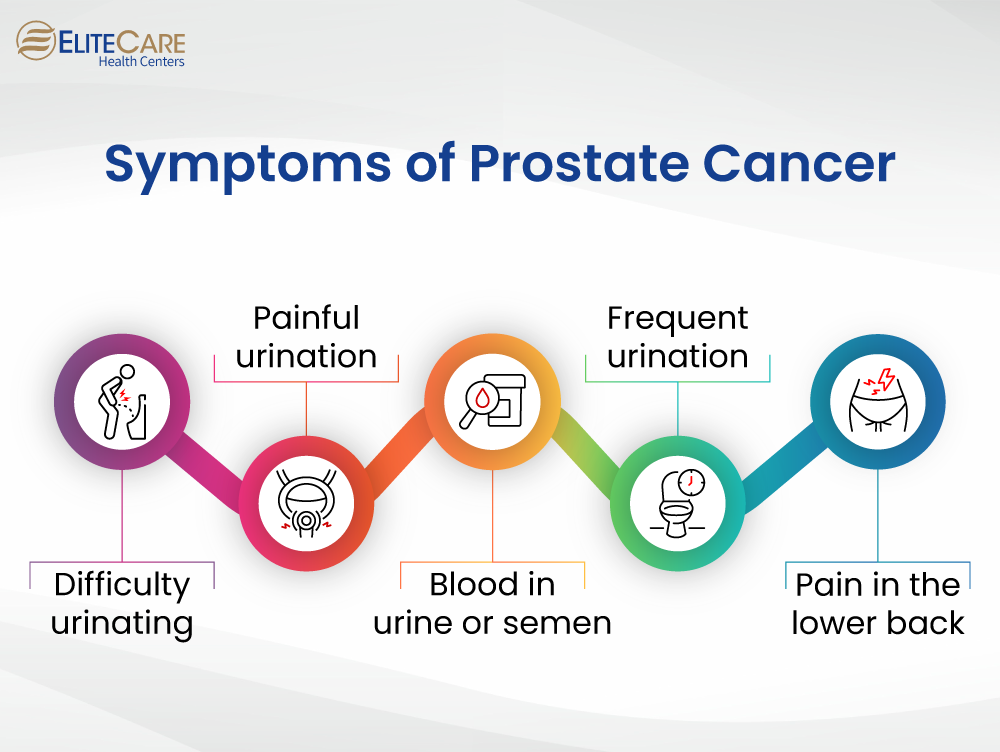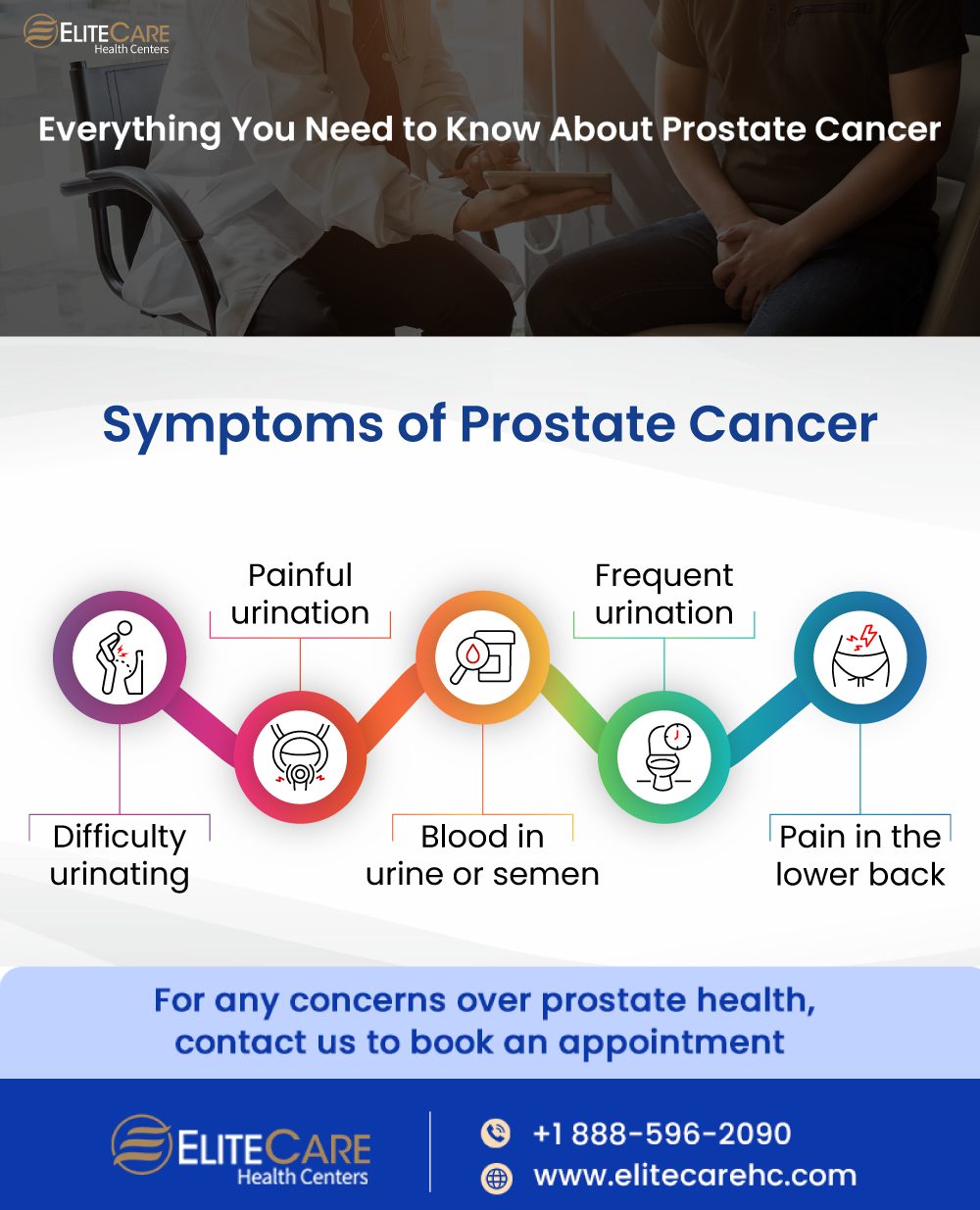
This is a type of cancer that affects the prostate gland, a walnut-shaped organ located in the male reproductive system. In the United States, prostate cancer is the second most common diagnosed cancer in men with most cases reported in older men over 65. Although there are no exact causes of prostate cancer, age, family history, obesity, and sedentary lifestyle can increase the risk of this disease.
5 Common Types of Prostate Cancer
- The most common type is adenocarcinoma that accounts for more than 95% of total cases. This type of prostate cancer develops in the gland cells that produce the prostate fluid.
- Small cell carcinoma is a rare but aggressive type that develops in the small cells of the prostate gland.
- A neuroendocrine tumor is a rare type that develops in the hormone-producing cells of the prostate gland.
- Sarcomas originate in the connective tissue of the prostate gland.
- Transitional cell carcinomas develop in the cells that line the bladder and urethra.
Symptoms of Prostate Cancer
There are often no visible symptoms in the early stages of the disease. Nevertheless, it is crucial to be mindful of any symptoms, visit a medical clinic, and discuss concerns with a primary care physician for early diagnosis and proper treatment. A few early signs of prostate cancer are as follows:

Difficulty urinating
The urethra is a tube, transporting urine from the bladder to the outside of the body. If the prostate gland is enlarged or cancerous, it can create pressure on the urethra and cause pain or other problems during urination.
Painful urination
Also known as dysuria, an infected, inflamed or cancerous prostate gland can lead to painful urination.
Blood in urine or semen
Although it can indicate other less serious conditions, such as a urinary tract infection or an enlarged prostate, blood in urine or semen can also indicate cancer.
Frequent urination
The urge to urinate more frequently than usual, especially at night, can indicate prostate cancer. The enlarged or cancerous prostate gland can put pressure on the bladder, therefore, creating a need to urinate more frequently.
Pain in the lower back, thighs, or hips
If cancer has spread to other parts of the body, it can eventually cause pain in the lower back, upper thighs, or hips.
Additionally, there are a few other signs and symptoms that may indicate prostate cancer in some people, including:
- Fatigue
- Weight loss
- Loss of appetite
- Erectile dysfunction
- Urinary incontinence
However, these symptoms can also indicate other health conditions and are not always a sign of prostate cancer. Individuals experiencing any of these symptoms should visit a health care clinic and consult a primary care physician for proper diagnosis and treatment.
Diagnostic Tests for Prostate Cancer
Digital Rectal Exam (DRE)
It is a manual physical examination in which a primary care physician inserts a finger into the rectum to feel the prostate gland. The physician then checks for any lumps, bumps, or abnormalities that may indicate the presence of cancerous cells. This test is usually part of a routine physical exam for men over the age of 50, or for men who are at higher risk of developing this cancer.
PSA test
Commonly known as PSA test, the prostate-specific antigen test is a blood test that helps measure the level of PSA in the blood. PSA is a protein produced by the prostate gland, and high levels of PSA in the blood may indicate the presence of cancerous cells.
However, PSA levels also elevate due to other conditions, such as benign prostatic hyperplasia (BPH), which is noncancerous enlargement of the prostate gland.
Biopsy
It involves the removal of a small tissue sample from the prostate gland to examine it under a microscope. A biopsy is generally recommended when other diagnostic tests, such as DRE and PSA, indicate the possibility of prostate cancer. During a biopsy, a primary care physician or healthcare provider inserts a needle through the rectum or perineum to collect a tissue sample for analysis.
Treatment Options
- Surgery for prostate cancer involves the removal of the prostate gland and some surrounding tissue. Doctors typically recommend it for individuals with early-stage prostate cancer who are in good shape.
- Radiation therapy is typically recommended after surgery, and it uses high-energy radiation to kill the remaining cancer cells.
- Hormone therapy for prostate cancer involves the use of medications that block or reduce the production of male hormones like testosterone, which can fuel the growth of prostate cancer cells. Oncologists may use hormone therapy alone or in combination with other treatments for prostate cancer.
It is crucial to discuss the potential risks and benefits of each treatment option with a team of healthcare professionals including your oncologist and primary care physician to determine the most appropriate treatment options based on individual circumstances.
Conclusion
Prostate cancer is a serious condition, and it is important for seniors to be aware of the risk factors associated with it and to take steps to reduce their risk of developing this disease. This includes maintaining a healthy diet, staying physically active, and getting regular screenings. By staying informed and taking proactive steps, it becomes easy to maintain prostate health and enjoy a long, healthy life. For any further queries or concerns, contact EliteCare Health Centers, a chain of healthcare centers in Florida that provides senior care services. Visit your nearest center or call us to schedule an appointment with board-certified primary care physicians at one of the best medical clinics for seniors.






